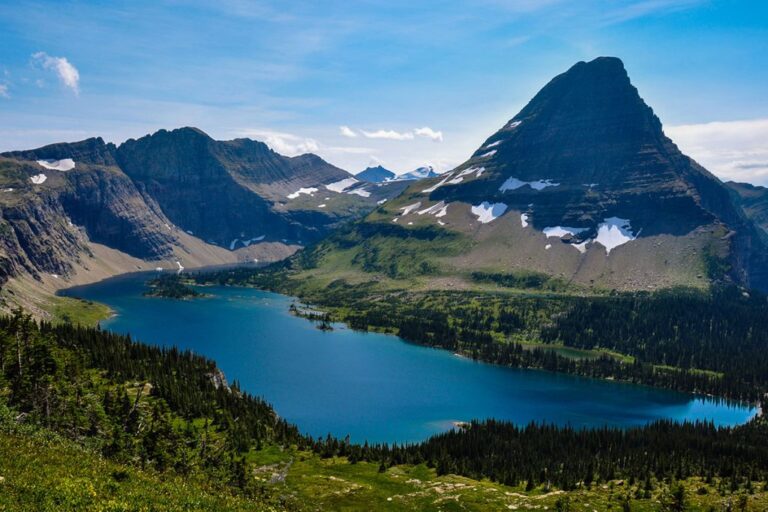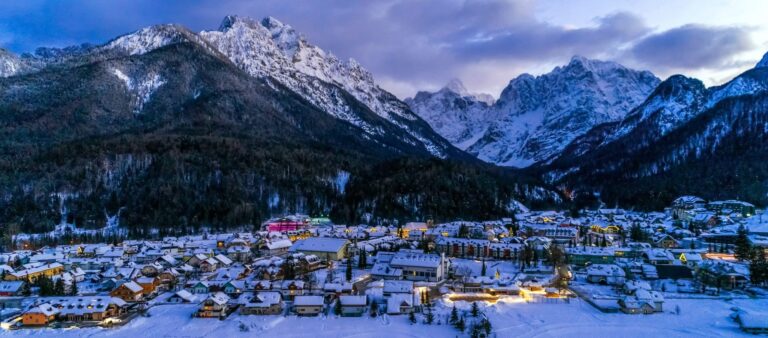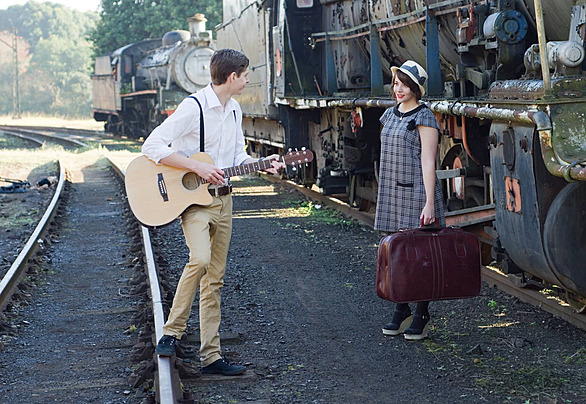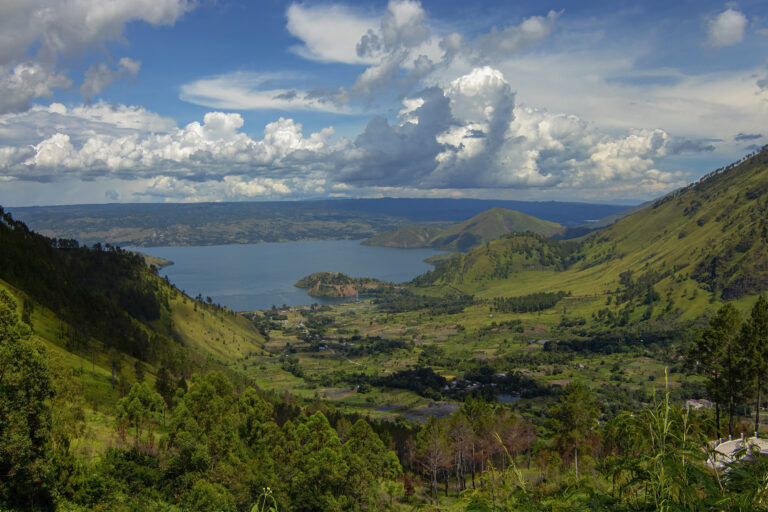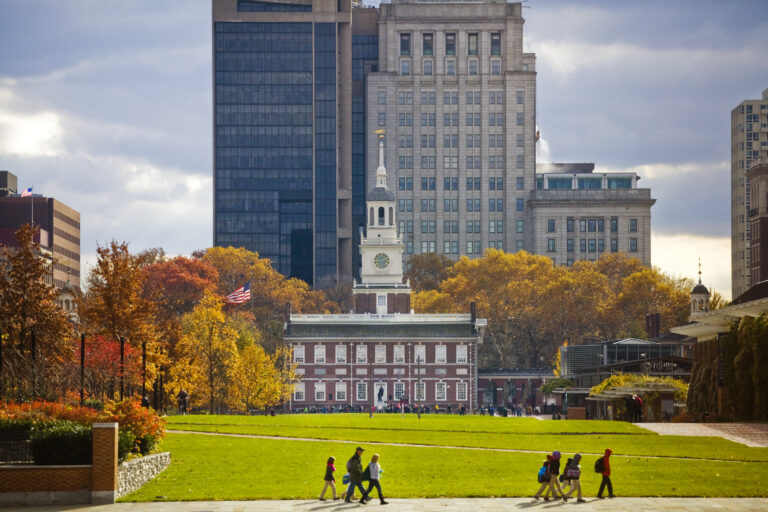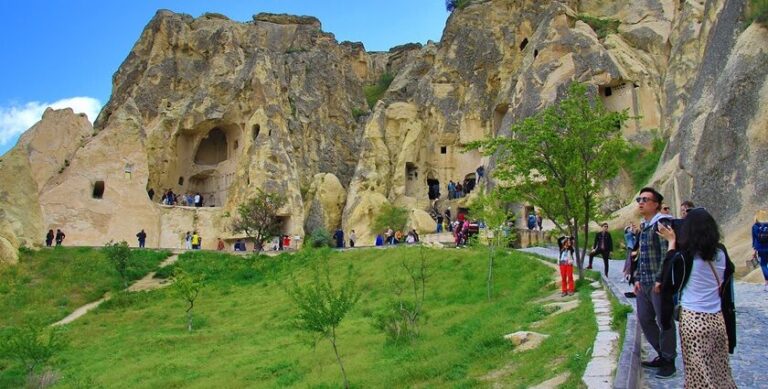Discovering Pamukkale, Turkey Where Cotton Castles, Ancient Cities, and Thermal Dreams Collide
If you’re scrolling through Instagram and suddenly see what looks like a snowy mountain slope under a blazing Turkish sun, pause before you book that ski trip. That’s not snow, it’s Pamukkale, Turkey, home to surreal travertine terraces and thermal pools that have dazzled visitors for centuries.
Welcome to Pamukkale, where the ground looks like clouds and you question reality. Is this a dream, or did someone drop a cotton candy machine? Nestled in Denizli Province, this dreamy destination looks like it belongs in a fantasy novel, with white terraces cascading down the hillside, ancient ruins peeking through olive groves, and thermal pools that make even the fanciest spas jealous.
Let’s dive (not literally… unless you want to get kicked out) into everything you need to know about this magical spot. From ancient secrets to modern travel tips, Pamukkale is way more than just a pretty face on your explore page.
What Is Pamukkale?
The Science Behind the Sparkle
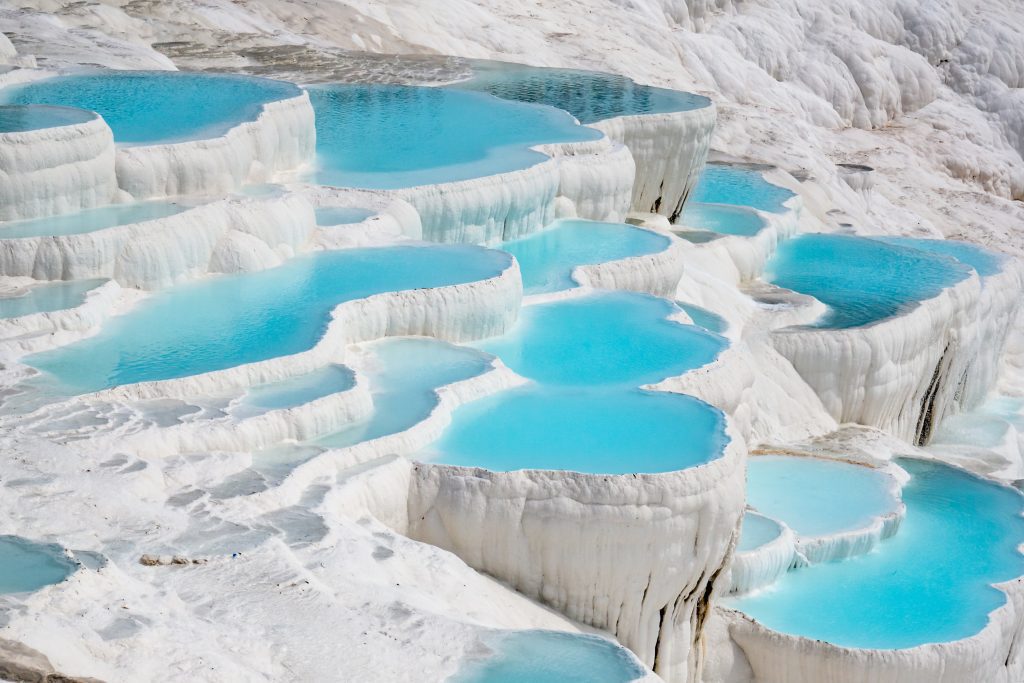
Pamukkale’s iconic terraces? They’re not made of whipped cream, just travertine, courtesy of some fancy hot springs. The water flowing down the cliffs leaves calcium behind as it cools, slowly creating those iconic cotton-white steps. Think of it like nature doing tile work… but with way more patience.
17 Thermal Springs and Counting
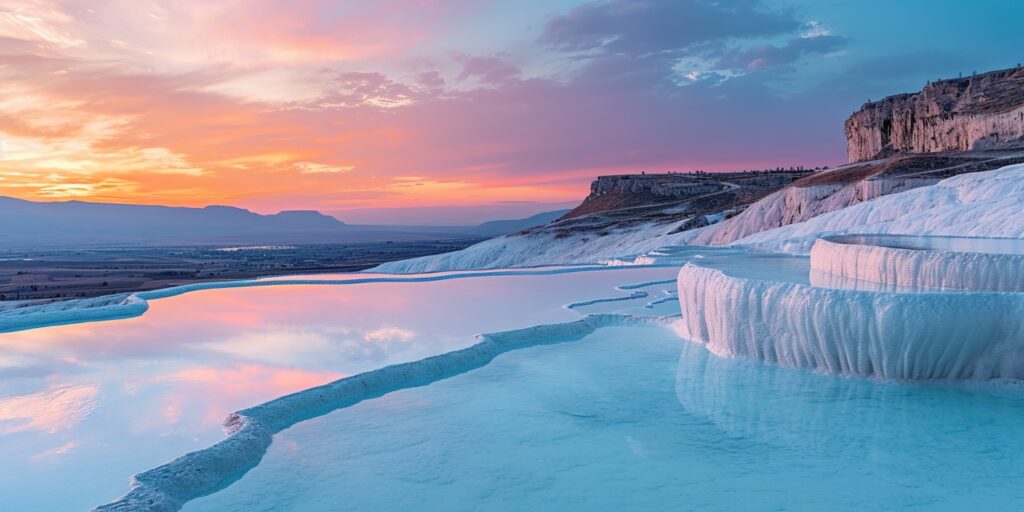
With 17 hot springs ranging from “nice and toasty” to “boil your lunch,” Pamukkale isn’t messing around. Yep, some of them could basically cook your eggs if you left them in too long. These springs have been bubbling up for thousands of years, and they’ve played a huge part in why ancient civilizations were obsessed with this place.
A Peek Into the Past – Hello, Hierapolis
The Ancient Spa City
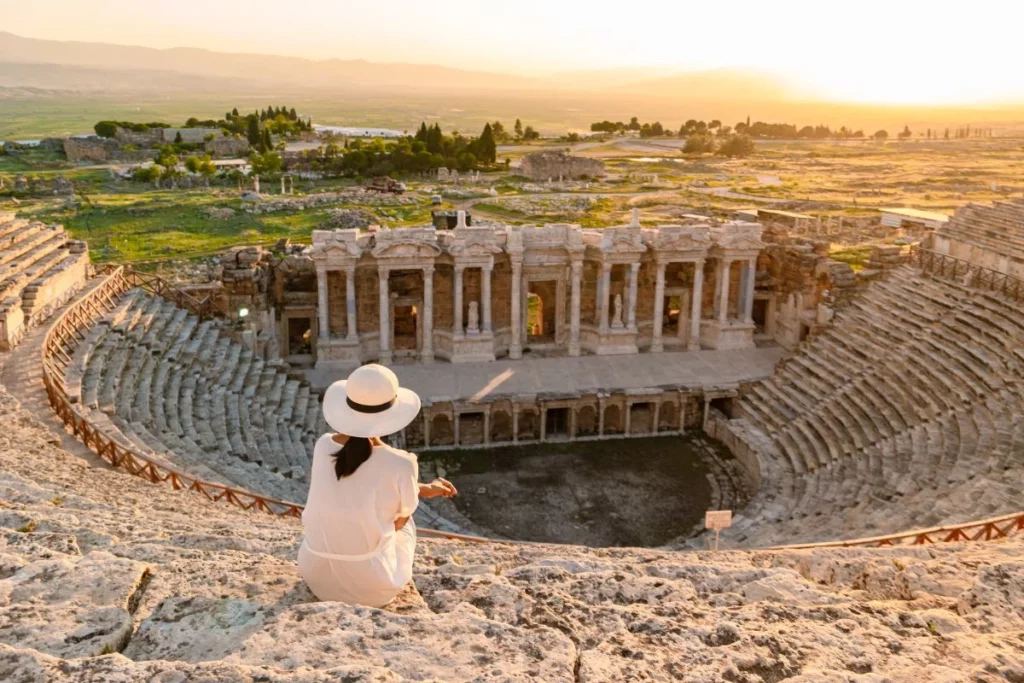
Long before Instagram influencers were posing on the edge of the thermal pools, the Romans were soaking their togas in the same water. The city of Hierapolis, perched just above the terraces, was founded in the 2nd century BCE and became one of the ancient world’s most famous spa towns.
Sick? Sore? Need some Roman-style relaxation? People would travel from far and wide to soak in Pamukkale’s healing waters. (Ancient Yelp probably gave it 5 stars.)
Cleopatra’s Pool – Queen-Approved Bubbles
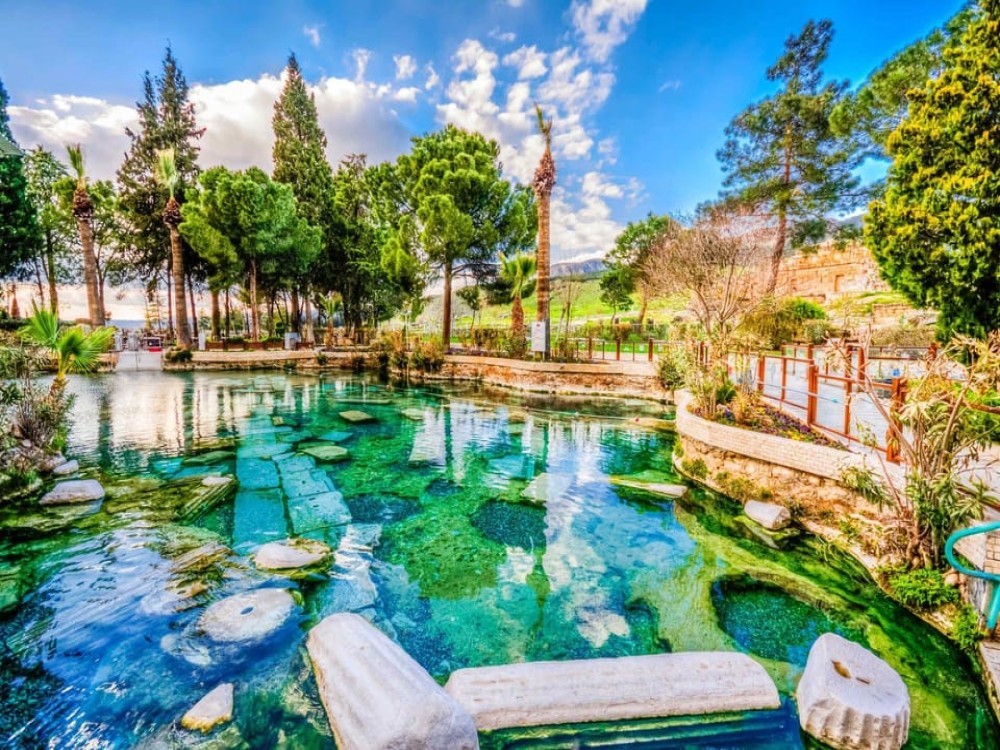
Rumor alert: Cleopatra may have taken a dip here because even queens need a good soak. Today, it’s called Cleopatra’s Pool, and yes, you can still swim there. The pool is filled with warm, mineral-rich water and sunken marble columns, left behind by an ancient earthquake. Swimming here is basically like doing laps through a living museum. Minus the toga.
Things to Do in Pamukkale (Besides Just Staring in Awe)
Walk the Travertine Terraces (But Barefoot, Please)
You can’t just stomp all over the travertines in hiking boots. Visitors are required to go barefoot to protect the delicate formations. It’s a little weird at first, but it adds to the experience; just don’t expect spa slippers.
Visit the Hierapolis Museum
Once a Roman bathhouse, now a museum. The Hierapolis Archaeological Museum showcases statues, sarcophagi, and artifacts from the surrounding ruins. It’s a quiet, cool break from the sun and a crash course in Roman self-care.Paraglider
Over the Cotton Castle
Feeling adventurous? Want to feel like a majestic eagle with a selfie stick? Go paragliding over Pamukkale, including fluffy terraces and ancient ruins with VIP sky access.. Pro tip: Don’t look down right when you jump, unless you enjoy that “my soul just left my body” feeling.
Dip in the Antique Pool
If Cleopatra’s Pool is the queen of Instagrammable spots, then the Antique Pool is her royal cousin. Floating among fallen Roman columns while warm water bubbles around you? Yes, please. Sure, you’ll spend a few lira, but you’ll walk away with views that look straight out of a dream (no refunds for emotional damage from too much beauty).
You could go in winter
Seasons of the Cotton Castle
- Spring (March–May): Mild weather, blooming wildflowers, fewer crowds. A+ vibes.
- Summer (June–August): HOT. Like, “why-did-I-wear-jeans?” hot. But sunsets are magical.
- Fall (September–November): Perfect mix of warmth and peace.
- Winter (December–February): Quieter and cooler. The white terraces look even dreamier with morning fog.
If you’re aiming for those golden-hour photos with fewer selfie sticks in the frame, early morning or late afternoon is your sweet spot.
How to Get to Pamukkale
Fly into Denizli
The closest airport is Denizli Çardak Airport (DNZ), which connects to Istanbul and other major cities. From there, it’s about a 45-minute drive to Pamukkale.
Buses, Trains, and Cars
- Bus: Direct routes from cities like Istanbul, Izmir, and Antalya.
- Train: Denizli is connected via regional rail lines.
- Car Rental: If you love stopping for spontaneous photo ops (or fresh figs from roadside vendors), renting a car is the way to go.
Where to Stay – Sleep Near the Clouds
Pamukkale Village: Cozy and Close
This tiny town sits right at the base of the terraces. You’ll find guesthouses, boutique hotels, and charming B&Bs. Most spots offer breakfast, views of the white cliffs, and easy access to the park.
Denizli City: Bigger but Farther
If you want more city li, shopping, restaurants, and nightlife, Denizli is about 20 minutes away. More choices, but slightly less magic.
Local Eats – What to Munch While You Marvel
Gözleme, Kebab, and Ayran
Treat yourself to:
- Gözleme: Turkish stuffed flatbread, freshly made by local aunties.
- Kebabs: Juicy, smoky, unforgettable.
- Ayran: A cold, salty yogurt drink that sounds weird but hits the spot in summer.
Eat with a View
Dine like royalty with a view. Pamukkale’s terrace cafés serve up delicious meals with a side of jaw-dropping scenery. Imagine sipping Turkish tea as the sun sets behind the terraces. Chef’s kiss.
Pamukkale Travel Tips (From People Who’ve Been)
Bring a Small Towel
Because you’ll get wet feet, legs, possibly your whole self.
Wear a Swimsuit Under Your Clothes
Changing rooms isn’t always convenient, and spontaneity is part of the fun.
Respect the Site
Stay on marked paths. The terraces are delicate, and over-tourism is a real concern.
Don’t Expect a Spa Treatment
Yes, the water is warm. Pamukkale’s luxury comes from hot springs and calcium magic—not scented candles and overpriced robes.
The Magic Beyond the White
Kaklik Cave – “Underground Pamukkale” Ap – Approximately
minutes away. It is asasasasground Pamukkale” due to its travertine-like formations and hot springs. It’s like Pamukkale’s mysterious younger sibling, less famous but equally enchanting.
Laodicea Ruins
History lovers, don’t miss Laodicea, an ancient city just 10 km from Pamukkale. Think grand theaters, majestic columns, and a whole lot fewer tourists.
Conclusion: Is Pamukkale Worth It?
100% yes.
Whether you’re a nature nerd, history buff, selfie king/queen, or just someone looking to soak in something unique, Pamukkale delivers. The blend of natural beauty, ancient history, and peaceful vibes makes it a must-see not just in Turkey, but on Earth.
You’ll leave with sun-warmed skin, limestone-dusted toes, and at least one picture that looks like you’re standing in heaven.
So… when are you booking your trip?
FAQ: Everything You’re Too Shy to Ask About Pamukkale
1. Is Pamukkale safe to visit?
Yes! Pamukkale is a well-managed and popular destination. As long as you follow the rules (like walking barefoot on the terraces), it’s perfectly safe even for kids and grandparents who just want to dip their toes.
2. Can I swim in the pools?
Not all of them! Most of the travertine terraces are just for walking or wading. If you’re dreaming of a proper soak, head to Cleopatra’s Poo, where swimming is allowed and Roman ruins keep you company underwater.
3. Is that snow? Or salt? What is that white stuff?!
It’s neither snow nor salt; it’s calcium carbonate from the thermal spring water. As the hot water flows down and cools, it leaves behind these dreamy white deposits that harden into travertine terraces. Nature’s version of tilework.
4. Do I need a ticket to enter Pamukkale?
Yes, there’s a ticket to access the Pamukkale-Hierapolis site. It includes the terraces, the ancient city ruins, and the museum. If you want to swim in Cleopatra’s Pool, there’s a separate entry fee for that.
5. What should I wear?
Dress comfortably! Light clothes, a hat, sunglasses, and most importantly, wear your swimsuit underneath if you plan to swim. You’ll also need to walk barefoot on the terraces, so sandals or flip-flops that you can easily take off are ideal.
6. Are there restrooms or changing rooms?
Yep, but they’re not scattered everywhere. You’ll find them near the main entrances and Cleopatra’s Pool. Best to arrive somewhat prepared.
7. How much time should I spend at Pamukkale?
Plan for at least half a day, though many people stay the full day to soak, explore, and catch sunset views. If you’re into history, thermal dips, and epic photos, you won’t want to rush it.
8. Can I visit in winter?
Definitely. Winter is an underrated time to visit Pamukkale. The misty mornings and fewer crowds make it feel extra magical. Just pack a jacket, thermal pools are warm, but the air might not be!
9. Is Pamukkale anything like CappadociaDifferentt vibes. Pamukkale is about white thermal pools and ancient ruins. Cappadocia is about caves and hot air balloons. But both are bucket-list worthy, and if you can do both, do both!
10. Is it accessible for strollers or wheelchairs?
Some areas are. The museum and parts of Hierapolis are manageable, but the terraces are uneven and slippery. If you’re traveling with someone who needs assistance, extra care (and maybe a buddy system) is a good idea.

